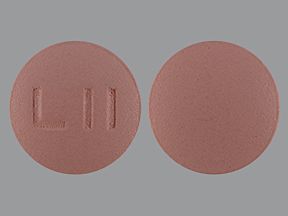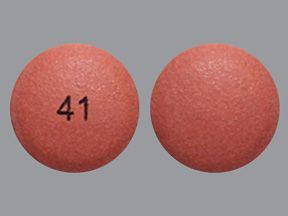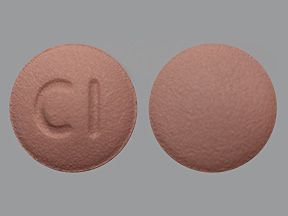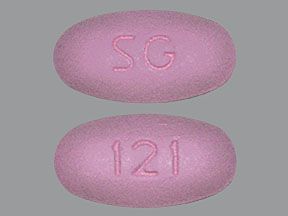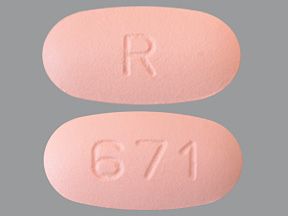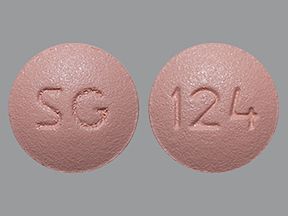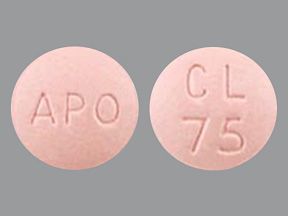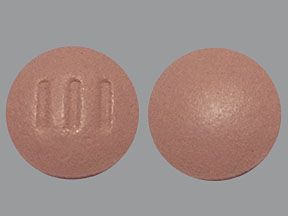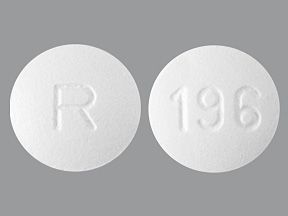Clopidogrel is a generic prescription medication. It is FDA-approved to help prevent cardiovascular events such as heart attack and stroke in certain adults.
Specifically, clopidogrel is approved to reduce the risk of heart attack and stroke in people with:
- acute coronary syndrome
- a recent heart attack, recent stroke, or a history of peripheral artery disease
Drug details
Clopidogrel belongs to a drug class called antiplatelet drugs. Platelets are a type of blood cell involved in blood clotting.
Clopidogrel comes as an oral tablet. It’s available in two strengths: 75 milligrams (mg) and 300 mg.
Brand-name versions
Clopidogrel is available as a generic drug. The brand-name version is Plavix.
Clopidogrel is a generic drug. A generic drug is an exact copy of the active drug in a brand-name medication. Plavix is the brand-name medication that clopidogrel is based on. A generic is considered to be as safe and effective as the original drug. Generics tend to cost less than brand-name drugs.
If you’re interested in taking Plavix instead of clopidogrel, talk with your doctor. They can tell you whether Plavix comes in forms and strengths that can be used for your condition. If you have insurance, you’ll also need to check whether your plan will cover Plavix.
To learn more about how generics compare with brand-name drugs, see this article.
The clopidogrel dosage your doctor prescribes will depend on the type of condition clopidogrel is being used to treat.
The following information describes dosages that are commonly used or recommended. However, be sure to take the dosage your doctor prescribes for you. Your doctor will determine the best dosage to fit your needs.
Dosage for preventing acute coronary syndrome
Here’s the clopidogrel dosage information for acute coronary syndrome (ACS).
| Clopidogrel for ACS | |
| Form | oral tablet |
| Strengths | 75 milligrams (mg), 300 mg |
| Doses | one loading dose of 300 mg on the first day only, then 75 mg once daily |
| How often | once daily |
| Administered by | self |
Dosage for recent heart attack, recent stroke, or peripheral artery disease
Here’s the clopidogrel dosage information for a recent heart attack, recent stroke, or peripheral artery disease (PAD).
| Clopidogrel for recent heart attack or stroke, or PAD | |
| Form | oral tablet |
| Strength | 75 mg |
| Dose | 75 mg once daily |
| How often | once daily |
| Administered by | self |
What if I miss a dose?
If you miss a dose of clopidogrel, take it as soon as you remember. However, if it’s almost time for your next dose, skip the missed dose and just take your regular dose at your next scheduled time.
You should not take more than one dose at once (unless your doctor advises this). Taking more than your prescribed dose of clopidogrel can increase the risk of the drug’s side effects.
It’s important not to miss doses of clopidogrel. Clopidogrel is prescribed to help prevent serious cardiovascular events, such as heart attack and stroke. Not taking the drug (including missing doses or stopping it without your doctor’s recommendation) may increase your risk of these events.
To help make sure that you don’t miss a dose, try using a medication reminder. This can include setting an alarm or using a timer. You could also download a reminder app on your phone.
Will I need to take this drug long term?
Clopidogrel is meant to be taken as a long-term treatment. If you and your doctor determine that clopidogrel is safe and effective for you, you’ll likely take it long term.
The Food and Drug Administration (FDA) approves prescription drugs such as clopidogrel to treat certain conditions. Clopidogrel may also be used off-label for other conditions. Off-label drug use is when an FDA-approved drug is prescribed for a purpose other than what it’s approved for.
Clopidogrel is FDA-approved for use in certain adults to help prevent cardiovascular events such as heart attack and stroke. The details of these uses are described below.
Clopidogrel for acute coronary syndrome
Clopidogrel is approved to reduce the risk of heart attack and stroke in people with acute coronary syndrome (ACS).
Specifically, clopidogrel is prescribed to help prevent these in people who have had one of the following cardiovascular problems:
- Non-ST elevation ACS. This involves a form of chest pain called unstable angina, a specific type of heart attack known as non-ST-elevation myocardial infarction, or both. For this use, clopidogrel may be prescribed to people who need either medication or coronary revascularization (a type of heart surgery used to improve blood flow to the heart) to treat their ACS.
- Acute ST-elevation ACS. ST-elevation myocardial infarction is a certain type of sudden heart attack. For people with this type of ACS, doctors prescribe clopidogrel in combination with aspirin.
“ST elevation” (or STE) refers to a change in a specific segment of your heart’s electrical activity as seen on an electrocardiogram (also known as an ECG or EKG). Doctors use ECG to diagnose heart problems, such as a heart attack.
ACS explained
ACS is a group of conditions associated with a sudden decrease in blood flow to the heart. The main forms of ACS are certain types of heart attack and a type of chest pain called unstable angina.
Your heart muscle needs a steady blood flow to supply the oxygen and nutrients the heart needs to function. Without adequate blood flow, the heart can’t function correctly. This causes symptoms and may be life threatening.
Symptoms of ACS may include:
- chest pain or pressure
- dizziness
- indigestion
- nausea or vomiting
- pain or tightness in one or both arms, the abdomen, neck, or jaw
- shortness of breath
- sweating
These symptoms are very serious. If you or someone else is experiencing ACS symptoms, seek emergency medical care right away.
You can learn more about ACS in our hub for cardiovascular health.
Clopidogrel for recent heart attack, recent stroke, or peripheral artery disease
Clopidogrel is also approved to reduce the risk of heart attack and stroke in people who:
- have had a recent heart attack
- have had a recent stroke
- have peripheral artery disease (PAD)
Heart attack, stroke, and PAD explained
People who’ve had a recent heart attack or stroke are at high risk of having another one. Clopidogrel doesn’t directly treat any lingering symptoms related to recovering from a heart attack or stroke. However, the drug can help prevent another heart attack or stroke from occurring.
Clopidogrel is also used to help prevent heart attack and stroke in people with PAD. Having this condition significantly increases the risk of having a heart attack or stroke.
With PAD, you have a decrease in peripheral blood flow. (“Peripheral” blood flow refers to the circulation of blood anywhere in your body besides the heart and brain.) This decrease in blood flow is often caused by narrowing of the arteries due to the buildup of fatty deposits in the blood vessel walls. People with PAD often have reduced blood flow to their legs, feet, arms, and abdomen.
Symptoms of PAD may include:
- intermittent claudication (pain in your hip, thigh, or calf muscles during physical activity)
- leg numbness or weakness
- cold feet or lower legs
- wounds on the feet or lower legs that don’t heal
- skin on your legs appearing shiny or discolored
- erectile dysfunction
You can learn more about these conditions in our hub for cardiovascular health.
Clopidogrel and children
Clopidogrel is only FDA-approved for use in adults.
Use of this drug in people under the age of 18 years old is considered off-label. Off-label drug use is when an FDA-approved drug is prescribed for a purpose other than its approved uses.
Clopidogrel can cause mild or serious side effects (also known as adverse effects). The following lists contain some of the key side effects that may occur while taking clopidogrel. These lists do not include all possible side effects.
For more information about the possible side effects of clopidogrel, talk with your doctor or pharmacist. They can give you tips on how to manage any side effects that may be concerning or bothersome.
Note: The Food and Drug Administration (FDA) tracks side effects of drugs it has approved. If you would like to notify the FDA about a side effect you’ve had with clopidogrel, you can do so through MedWatch.
Mild side effects
Below is a partial list of mild side effects of clopidogrel. To learn about other mild side effects, talk with your doctor or pharmacist, or view clopidogrel’s prescribing information.
Mild side effects of clopidogrel can include:
- minor bleeding, such as:
- taking longer than is typical to stop bleeding after an injury
- bruising
- skin itchiness
- mild allergic reaction*
Most of these side effects may go away within a few days to a couple of weeks. However, if they become more severe or don’t go away, talk with your doctor or pharmacist.
* For more information about allergic reaction and clopidogrel, see “Allergic reaction” below.
Serious side effects
Serious side effects from clopidogrel aren’t common. However, they can occur. Call your doctor right away if you have serious side effects. Call 911 or your local emergency number if your symptoms feel life threatening or if you think you’re having a medical emergency.
Serious side effects can include:
- major bleeding
- thrombotic thrombocytopenic purpura
- severe allergic reaction*
* For details about allergic reaction and clopidogrel, see “Allergic reaction” below.
ALLERGIC REACTIONAs with most drugs, some people can have an allergic reaction after taking clopidogrel. This side effect wasn’t reported in clinical trials of this drug. However, it has occurred since the drug was approved.
Symptoms of a mild allergic reaction can include:
A more severe allergic reaction is rare. However, it is possible. Symptoms of a severe allergic reaction can include:
- swelling under your skin, typically in your eyelids, lips, hands, or feet
- swelling of your tongue, mouth, or throat
- trouble breathing
Call your doctor right away if you have an allergic reaction to clopidogrel, as the reaction could become severe. Call 911 or your local emergency number if your symptoms feel life threatening or if you think you’re having a medical emergency.
Clopidogrel can interact with several other medications. It can also interact with certain supplements as well as certain foods.
Different interactions can cause different effects. For instance, some interactions can interfere with how well a drug works. Other interactions can increase side effects or make them more severe. Drug-condition interactions can also cause certain effects. For information about these interactions, see the “Clopidogrel oral tablet precautions” section below.
Clopidogrel and other medications
Before taking clopidogrel, talk with your doctor and pharmacist. Tell them about all prescription, over-the-counter, and other drugs you take. Also, tell them about any vitamins, herbs, and supplements you use. Sharing this information can help you avoid potential interactions.
Below is a table of medications that can interact with clopidogrel. This table does not contain all drugs that may interact with clopidogrel.
| Medication type or medication name | Medication examples |
| certain proton pump inhibitors that inhibit (block) CYP2C19, a drug metabolism enzyme | • omeprazole (Prilosec) • esomeprazole (Nexium) |
| anticoagulants | • apixaban (Eliquis) • rivaroxaban (Xarelto) • warfarin (Jantoven) |
| opioid agonists | • fentanyl (Fentora, Actiq) • hydrocodone (Hysingla ER) • tramadol (Qdolo, Conzip) • naloxone (Narcan, Zimhi, Zubsolv) |
| nonsteroidal anti-inflammatory drugs | • ibuprofen (Advil, Motrin) • naproxen (Aleve, Naprosyn) |
| selective serotonin reuptake inhibitors | • paroxetine (Paxil, Pexeva) • fluoxetine (Prozac) • citalopram (Celexa) |
| serotonin-norepinephrine reuptake inhibitors | • duloxetine (Cymbalta, Drizalma Sprinkle) • venlafaxine (Effexor XR) |
| repaglinide | – |
| drugs that increase the activity of CYP2C19, a drug metabolism enzyme | rifampin (Rifadin, Rimactane) |
Your doctor or pharmacist can provide you with more information about the interactions between these medications and clopidogrel. If you have questions about any drug interactions that may affect you, your doctor or pharmacist can address those as well.
Other interactions
Other types of interactions, such as those with herbs, supplements, foods, lab tests, and vaccines, may also occur with clopidogrel. The following table lists some of these interactions.
| Cause of interaction | Examples |
| herbs and supplements | Check with your doctor or pharmacist before taking herbs and supplements while taking clopidogrel. Some herbs and supplements, such as fish oil, may increase the risk of bleeding. (Bleeding is a possible side effect of clopidogrel.) |
| foods | Your doctor will likely recommend avoiding or limiting the consumption of grapefruit and grapefruit juice while taking clopidogrel. Consuming grapefruit could make clopidogrel less effective. |
| lab tests | There are no known interactions between clopidogrel and lab tests. |
| vaccines | There are no known interactions between clopidogrel and vaccines. |
Your doctor can provide you with details about these interactions with clopidogrel.
You should take clopidogrel according to the instructions your doctor gives you.
Clopidogrel comes as an oral tablet that you swallow. It’s taken once daily. Clopidogrel can be taken with or without food.
In certain situations, clopidogrel is taken in combination with aspirin. You should not take aspirin with clopidogrel unless your doctor specifically advises you to do so. If your doctor tells you to take clopidogrel and aspirin, these medications may be taken together or separately as long as they are each taken once daily.
Your doctor will tell you the dosage of aspirin to take with clopidogrel. See “Clopidogrel oral tablet and aspirin” below for more details.
When to take
You’ll take clopidogrel once a day. There isn’t a best time of day to take clopidogrel.
Taking the medication around the same time of day helps keep a steady level of the drug in your body. This helps clopidogrel work effectively.
To help make sure that you don’t miss a dose, try using a medication reminder. This can include setting an alarm or using a timer. You could also download a reminder app on your phone.
Accessible labels and containers
If your prescription label is hard to read, talk with your doctor or pharmacist. Some pharmacies offer labels that have large print, braille, or a code you scan with a smartphone to convert text to speech. If your local pharmacy doesn’t have these options, your doctor or pharmacist may be able to direct you to one that does.
If you have trouble opening medication bottles, ask your pharmacist whether they can put clopidogrel in an easy-open container. They also may be able to recommend tools that can make it simpler to open lids.
Taking clopidogrel with food
Clopidogrel can be taken with or without food.
Can clopidogrel be crushed, split, or chewed?
Clopidogrel is an oral tablet that you swallow. If you have trouble swallowing the tablet whole, talk with your doctor or pharmacist. They can advise on whether it is safe to crush, split, or chew the tablet if necessary.
You should not take aspirin with clopidogrel unless your doctor specifically advises you to do so. Taking these drugs together may increase your risk of bleeding.
However, in certain people with acute coronary syndrome (ACS), doctors commonly prescribe clopidogrel along with aspirin. The combination is approved by the Food and Drug Administration (FDA) to help prevent cardiovascular events such as heart attack and stroke in people with ACS who’ve had an acute ST-elevation myocardial infarction (STEMI). (STEMI is a certain type of sudden heart attack.)
If your doctor tells you to take aspirin and clopidogrel, these medications may be taken together or separately as long as they are each taken once daily.
Your doctor will tell you the dosage of aspirin to take with clopidogrel. The typical dose of aspirin ranges from 75 milligrams (mg) to 325 mg once daily.
Clopidogrel is commonly used in older adults (ages 60 years and over) to reduce the risk of heart attack and stroke.
Clopidogrel’s clinical trials included more than 54,000 participants, over half of whom were older adults. A large percentage of participants were age 75 years or older. The results of these trials showed that clopidogrel was effective at reducing the risk of heart attack and stroke in older adults.
Older adults may be more likely to experience bleeding from clopidogrel when it is taken in combination with aspirin. Bleeding is a possible side effect of clopidogrel and may be mild to serious. For more information about the drug’s side effects, see the “Clopidogrel oral tablet side effects” section above.
The drug’s safety and effectiveness are expected to be the same in older adults as in younger adults. Clopidogrel’s recommended dosage for older adults is the same as for younger adults. The typical dosage of clopidogrel is 75 milligrams (mg) taken once daily.
For people with acute coronary syndrome, doctors typically recommend a one-time loading dose of 300 mg on the first day of treatment. This loading dose in older adults is the same as the loading dose for younger adults.
Here are answers to some frequently asked questions about clopidogrel.
How does clopidogrel compare with other similar drugs, such as ticagrelor (Brilinta) or apixaban (Eliquis)?
Clopidogrel is an antiplatelet drug. It blocks the effects of platelets, which are blood cells involved in blood clotting.
Ticagrelor (Brilinta) is also an antiplatelet drug. Its uses and side effects are similar to that of clopidogrel. However, these drugs are different in several ways. For instance, clopidogrel is taken once daily, while ticagrelor’s typical dosing is twice daily.
On the other hand, apixaban (Eliquis) is an anticoagulant drug. Anticoagulant drugs work differently than antiplatelet drugs and have some different uses as well. These drugs work by affecting a specific step in your body’s blood clotting process. Examples of other anticoagulants are rivaroxaban (Xarelto) and warfarin (Jantoven).
All of these drugs can cause minor or serious bleeding as a possible side effect. If you have questions about how clopidogrel compares with other drugs, talk with your doctor or pharmacist.
Do I have to stop taking clopidogrel before surgery?
It depends on the type of surgery you’re having. Typically, doctors recommend not taking clopidogrel for the 5 days before a surgery that has a major risk of bleeding. This is because clopidogrel can further increase the risk of bleeding.
Minor bleeding is a common side effect of the drug. Rarely, clopidogrel may cause serious or even life threatening bleeding.
If you’re having surgery, your doctor will tell you which medications to stop before the procedure. They’ll also tell you when it is safe for you to continue your medications.
If I stop taking clopidogrel after one year, will I experience side effects such as withdrawal symptoms?
Stopping clopidogrel shouldn’t cause withdrawal symptoms, which are side effects that can occur when you stop taking a drug that your body has become dependent on. However, stopping clopidogrel may increase the risk of having a heart attack or stroke.
Keep in mind that clopidogrel is prescribed to help prevent serious cardiovascular events, such as heart attack and stroke. Not taking the drug, including missing doses or stopping it without your doctor’s recommendation, may increase your risk of these events.
If you have questions about how long you’ll take clopidogrel or what to expect after stopping the drug, talk with your doctor. They can also advise you on other ways to reduce your risk of serious cardiovascular problems.
Is fatigue a side effect of clopidogrel?
Fatigue wasn’t a side effect reported in clinical trials of clopidogrel. However, fatigue may be a symptom of a condition that’s been reported with clopidogrel, called microangiopathic hemolytic anemia (MAHA). With MAHA, your red blood cells become damaged and split into pieces, leading to a low level of red blood cells.
Be sure to tell your doctor if you experience fatigue during clopidogrel treatment. They can help determine the cause of the symptom and recommend ways to manage it.
As with all medications, the cost of clopidogrel can vary. The actual price you’ll pay depends on your insurance plan, your location, and the pharmacy you use.
Keep in mind that you may be able to get a 90-day supply of clopidogrel. If approved by your insurance company, getting a 90-day supply of the drug could reduce your number of trips to the pharmacy and help lower the cost. If you’re interested in this option, check with your doctor, pharmacist, or insurance company.
Before approving coverage for clopidogrel, your insurance company may require you to get prior authorization. This means that your doctor and insurance company will need to communicate about your prescription before the insurance company will cover the drug. The insurance company will review the prior authorization request and decide whether the drug will be covered.
If you’re not sure whether you’ll need to get prior authorization for clopidogrel, contact your insurance company.
Financial and insurance assistance
Financial assistance to help you pay for clopidogrel may be available.
Medicine Assistance Tool and NeedyMeds are two websites offering resources that may help decrease the price you pay for clopidogrel. They also offer tools to help you find low cost healthcare and educational resources. To learn more, visit their sites.
Mail-order pharmacies
Clopidogrel may be available through a mail-order pharmacy. Using this service may help lower the drug’s cost and allow you to get your medication without leaving home.
If recommended by your doctor, you may be able to receive a 90-day supply of clopidogrel, so there’s less concern about running out of the medication. If you’re interested in this option, check with your doctor, pharmacist, or insurance company. Some Medicare plans may help cover the cost of mail-order medications.
If you don’t have insurance, you can ask your doctor or pharmacist about online pharmacy options.
Taking more than the recommended dosage of clopidogrel can lead to serious side effects. Do not take more clopidogrel than your doctor recommends. (For information on the recommended dosages of clopidogrel, see the “Clopidogrel oral tablet dosage” section above.)
Overdose symptoms
Symptoms of an overdose can include:
- vomiting
- extreme weakness or exhaustion
- trouble breathing
- severe bleeding, such as gastrointestinal hemorrhage (serious bleeding in the stomach or intestines)
What to do in case of overdose
If you think you’ve taken too much of this drug, call your doctor. You can also call the American Association of Poison Control Centers at 800-222-1222 or use its online tool. However, if your symptoms are severe, call 911 or your local emergency number, or go to the nearest emergency room right away.
There is no known interaction between alcohol and clopidogrel.
However, drinking a lot of alcohol can increase the risk of bleeding. Taking clopidogrel also increases the risk of bleeding. So drinking alcohol while taking the drug may further raise the risk of this side effect.
If you consume alcohol, talk with your doctor about how much may be safe for you to drink during clopidogrel treatment.
This section describes what’s known about the safety of taking clopidogrel while pregnant or breastfeeding.
Clopidogrel and pregnancy
It isn’t known for sure whether it’s safe to take clopidogrel during pregnancy. The drug’s clinical trials didn’t include people who were pregnant or breastfeeding.
In animal studies, there was also no harm seen in fetuses when pregnant animals were given the drug. However, animal studies don’t always predict what may happen in humans.
In earlier reports of people taking clopidogrel during pregnancy, no negative effects were seen in fetuses exposed to the drug.
If you’re pregnant or may become pregnant, talk with your doctor about the benefits and risks of taking clopidogrel during pregnancy.
If you’re pregnant and taking clopidogrel, your doctor may recommend that you stop taking the drug temporarily as your due date approaches. This helps to reduce the risk of serious bleeding during and after delivery.
Your doctor will likely suggest stopping clopidogrel 5 to 7 days before your expected or scheduled delivery. And they’ll instruct you as to when to restart the drug.
Clopidogrel and fertility
It isn’t known for sure whether clopidogrel could affect your fertility (ability to reproduce).
The results of animal studies showed that clopidogrel had no effect on the fertility of male or female rats.
Talk with your doctor if you have questions about how medications could affect your fertility.
Clopidogrel and breastfeeding
It’s not known for sure whether clopidogrel is safe to take while breastfeeding. The drug’s clinical trials didn’t include people who were pregnant or breastfeeding.
In animal studies, the drug passed into the milk of lactating animals. This likely means that the drug passes into human breast milk as well. However, in earlier reports of children who were breastfed by people taking clopidogrel, no negative effects were seen.
If you’re pregnant or may become pregnant, talk with your doctor about the benefits and potential risks of taking clopidogrel during pregnancy.
Clopidogrel and birth control
It’s not known whether clopidogrel is safe to take during pregnancy. If you or your sexual partner can become pregnant, talk with your doctor about your birth control needs while you’re taking this medication.
For more information about taking clopidogrel during pregnancy, see “Clopidogrel and pregnancy” above.
This drug comes with several precautions. These are known as drug-condition interactions.
FDA warning: Drug metabolism problem
This drug has a
Drug metabolism problem. For clopidogrel to be effective, your body must be able to metabolize (break down) the drug into its active form. An enzyme in the body called CYP2C19 is mainly responsible for metabolizing clopidogrel into its active form.
Some people have genetic differences that cause variations in this enzyme. As a result, their body’s CYP2C19 enzyme doesn’t work as well as it does in others. Doctors call this “poor metabolism” of CYP2C19. If you have poor metabolism of this enzyme, your body isn’t able to break down clopidogrel into its active form. Because of this, the drug may not work for you.
Doctors can use blood tests to check for genetic variations. If they determine you have this drug metabolism problem, they likely won’t prescribe clopidogrel. Instead, they may recommend a different treatment option.
Other precautions
In addition to the boxed warning mentioned above, clopidogrel has other warnings.
If any of the following medical conditions or other health factors pertain to you, be sure to talk with your doctor before taking clopidogrel.
- if you’re pregnant or thinking about becoming pregnant
- if you’re breastfeeding or thinking about breastfeeding
- if you’ve had an allergic reaction to either drug or any of its ingredients
- if you have a history of bleeding problems, such as hemophilia or ulcers in your stomach or intestines
- if you have a condition or take a medication that increases your risk of bleeding
- if you have an upcoming surgery or dental procedure
Note: For more information about the potential negative effects of clopidogrel, see the “Clopidogrel oral tablet side effects” section above.
When you get clopidogrel from the pharmacy, the pharmacist will add an expiration date to the label on the bottle. This date is typically 1 year from the date they dispensed the medication.
The expiration date helps guarantee that the medication is effective during this time. The
Storage
How long a medication remains good to take can depend on many factors, including how and where you store the medication.
Clopidogrel tablets should be stored at a room temperature of 77° F (25° C) in a tightly sealed container away from light. If necessary, the drug may be kept at temperatures of 59° to 86° F (15° to 30° C) for short periods, such as while traveling with the drug. Avoid storing this medication in areas where it could get damp or wet, such as bathrooms.
Disposal
If you no longer need to take clopidogrel and have leftover medication, it’s important to dispose of it safely. This helps prevent others, including children and pets, from taking the drug by accident. It also helps keep the drug from harming the environment.
This article provides several useful tips on medication disposal. You can also ask your pharmacist for information about how to dispose of your medication.
Disclaimer: Medical News Today has made every effort to make certain that all information is factually correct, comprehensive, and up to date. However, this article should not be used as a substitute for the knowledge and expertise of a licensed healthcare professional. You should always consult your doctor or another healthcare professional before taking any medication. The drug information contained herein is subject to change and is not intended to cover all possible uses, directions, precautions, warnings, drug interactions, allergic reactions, or adverse effects. The absence of warnings or other information for a given drug does not indicate that the drug or drug combination is safe, effective, or appropriate for all patients or all specific uses.



